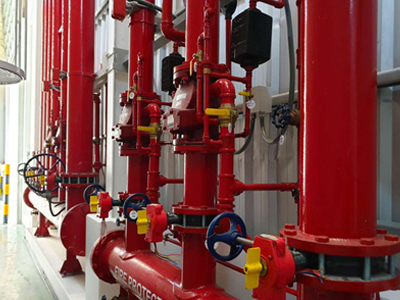Maintaining Fire Safety: The Crucial Role of Hydrant and Standpipe Inspections

Hydrants and standpipes stand as vital components of
firefighting systems, providing access to essential water sources during
emergencies. Regular inspection of these systems is paramount to maintain their
functionality and effectiveness in safeguarding lives and property. This
article delves into the significance of conducting regular inspections of
hydrants and standpipes to uphold fire safety standards.
Introduction
Hydrants and standpipes play a pivotal role in facilitating
firefighting operations by providing readily available water sources. Proper
maintenance and inspection of these systems are essential to ensure their
reliability during critical situations.
Importance of Regular Inspection
Regular inspection of hydrants and standpipes is
indispensable for several reasons:
- Early Detection of Issues: Regular inspections help identify potential problems such as leaks, corrosion, or blockages promptly. Addressing these issues early prevents them from escalating into significant failures during emergencies.
- Ensuring Operational Readiness: By conducting routine inspections, fire safety personnel can verify that hydrants and standpipes are operational and ready for immediate use when needed.
- Minimizing Risks: Functional hydrants and standpipes minimize the risk of property damage and loss of life during fire incidents. Regular inspections contribute to maintaining these systems' effectiveness in combating fires effectively.
- Compliance with Regulations: Many regulatory bodies and fire codes mandate regular inspection and maintenance of hydrants and standpipes. Compliance with these regulations is essential to uphold fire safety standards and avoid penalties.
Inspection Procedures
During a hydrant and standpipe inspection, various aspects
are assessed, including:
- Visual Inspection: Checking for visible signs of damage, corrosion, or obstruction.
- Operational Testing: Testing the functionality of valves, fittings, and connections to ensure proper water flow.
- Pressure Testing: Conducting pressure tests to verify the integrity of the system and detect leaks or weaknesses.
- Accessibility: Ensuring that hydrants and standpipes are easily accessible to firefighting personnel and vehicles.
Conclusion
Regular inspection of hydrants and standpipes is
indispensable for maintaining effective firefighting capabilities and ensuring
fire safety. By promptly addressing any issues identified during inspections,
property owners and fire safety professionals can enhance the reliability and
functionality of these critical systems. Investing in routine inspections
ultimately contributes to safeguarding lives, property, and communities from
the devastating impacts of fire incidents.
(This "Fire Safety Blogs" Published in May 2024 Edition)













